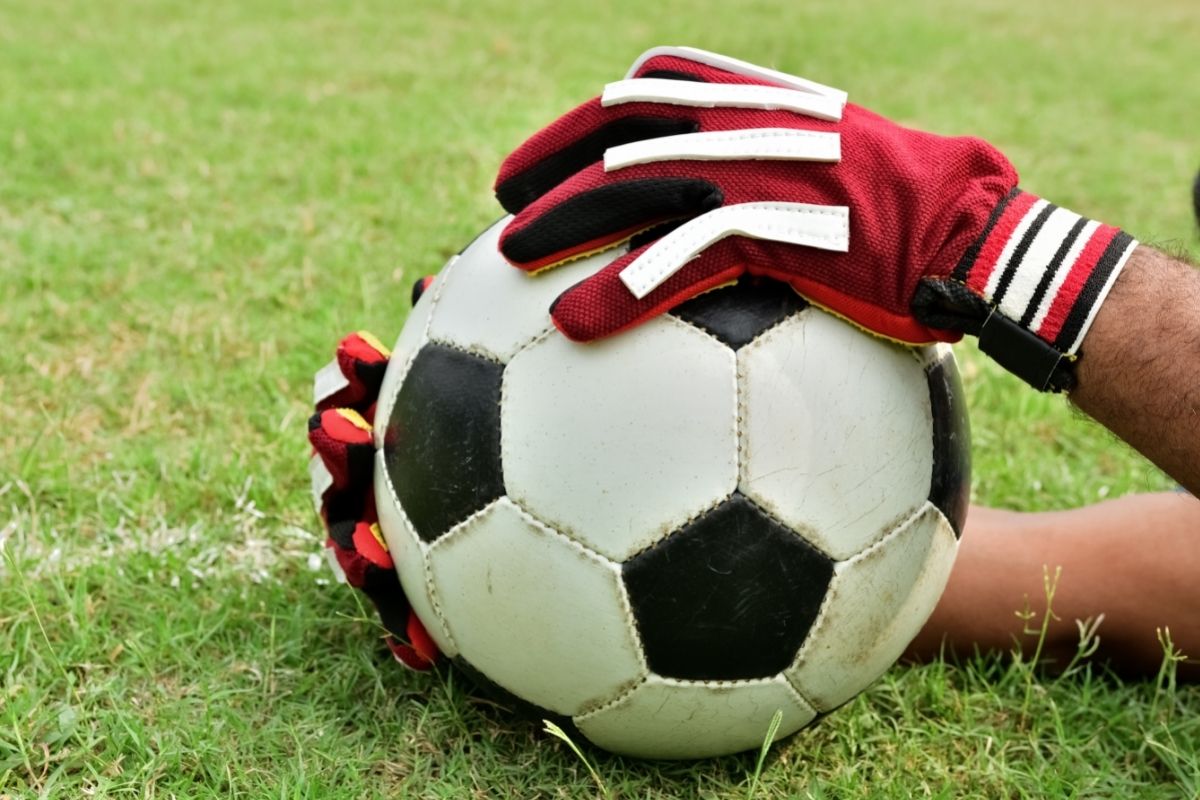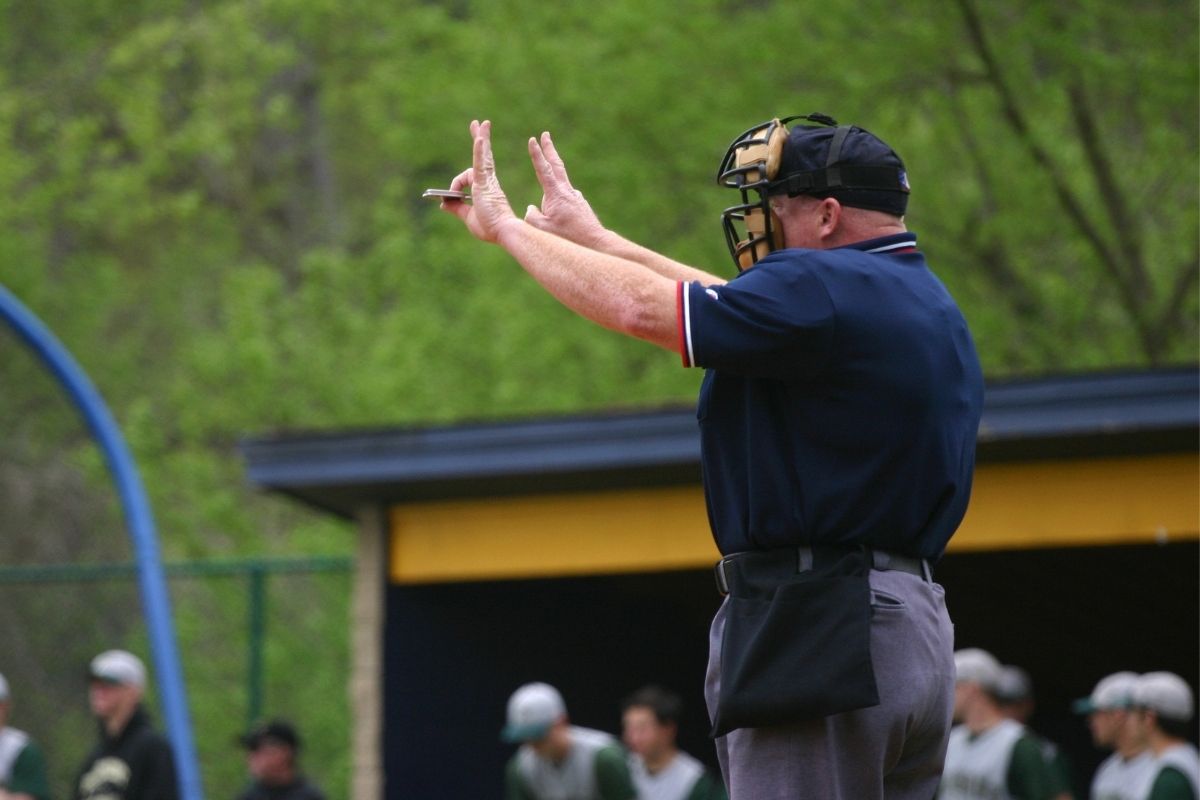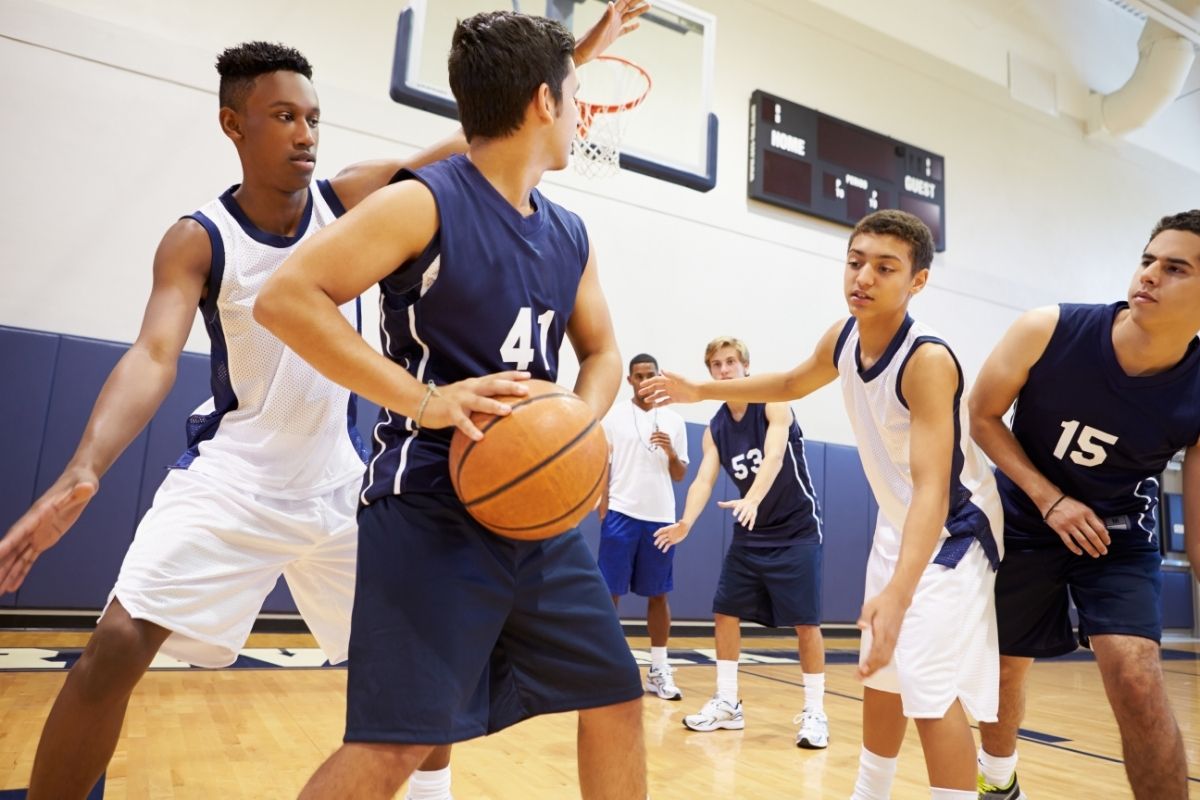Handball is most likely a term you’ve heard, even if you’re not familiar with soccer at all, in this article we’ll be exploring what the handball rule is, and how players play around this whilst playing soccer, so without further ado, let’s get started.


What Is The Handball Rule?
According to the FA (Football association) In its nutshell describes a handball in football as when the ball makes contact with a player’s hand/arm in an illegal manner.
The handball rules in soccer are some of the most contested and ambiguous rules of the game, so a lot of the time these rules are taken as guidelines, and each case is judged by its own merits.
Below is a list of offenses that are included in the handball rule:
It Is An Offense If A Player
- deliberately touches the ball with their hand/arm, including moving the hand/arm towards the ball
- scores in the opponents’ goal directly from their hand/arm, even if accidental, including by the goalkeeper
- after the ball has touched their or a team-mate’s hand/arm, even if accidental, immediately:
- scores in the opponents’ goal from a handball
- creates a goal-scoring opportunity from a handball
- touches the ball with their hand/arm when:
- the hand/arm has made their body unnaturally bigger
- the hand/arm is above/beyond their shoulder level (unless the player deliberately plays the ball which then touches their hand/arm)
As you can probably imagine, a handball in soccer can result in a win or a loss for either team playing, so it’s incredibly important to make sure that these rules are strictly enforced, especially in serious, high league matches.
The above offenses apply even if the ball touches a player’s hand/arm directly from the head or body (including the foot) of another player who is close.
Except For The Above Offenses, It Is Not An Offense If The Ball Touches A Player’s Hand/Arm
- directly from the player’s own head or body (including the foot)
- directly from the head or body (including the foot) of another player who is close
- if the hand/arm is close to the body and does not make the body unnaturally bigger
When Does The Arm Start And End?
you are considered to have committed a handball offense if the ball hits your hand or your arm.
The International Football Association (IFAB) defines the arm to be any part below the bottom of your armpit.
Which means if the ball hits your shoulder it’s not considered a handball.
Players will use this to their advantage, like when defending well see players tuck their arms behind the back or in the sides of the body, in a so-called “natural position”, when defending near an attacker’s cross or shot towards the goal.
This is to encourage the ball to hit their shoulders, with it still being a completely legal move.
It’s Usually A Handball If


- The ball touches the arm or hand extended in an unnatural position.
An arm that is extended laterally or vertically can make the body unnaturally bigger, covering more space than necessary.
Therefore, a handball in an “unnatural position” can be called, even if it is not done so deliberately.
It’s Usually Not A Handball If
- the ball makes contact with the arm/hand in a “natural position”.
- the ball accidentally makes contact with a defender’s hand/arm inside their own penalty area from a deflection, a teammate’s clearance or similar.
- the ball makes contact with a player’s supporting arm/hand. A player that falls to the ground or goes into a sliding tackle needs to protect himself using the support of the arm. Therefore it is usually not a handball if the ball hits the supporting arm/hand. On the contrary, it can lead to a handball situation if a player goes into a sliding tackle with his arm extended without using it as support.
Interestingly, it’s not considered an intentional handball if you move your hands up to protect your face against a ball.
This is because the ball would’ve hit your face regardless of if your hands were there or not, therefore it makes no difference if your hands are protecting your head.
All in all, these rules are in place because the referee will usually judge a handball on a case by case basis.
If it deliberately seems like a player has intentionally let the ball touch anywhere on his arm below his armpit then they will punish the player for it.
Punishment
So now that we know what a handball is, what punishment is there for it during a match?
If a player handballs and is found out, then they will be potentially issued a red or yellow card, depending on the severity of the handball, if it seems completely intentional beyond doubt the player can expect a red, or if unintentional but seemingly the player looked to position themselves for a handball, then they can expect a yellow.
The opposing team is then given either a free kick where the violation took place, or if it took place inside of the team’s friendly goal box, then the opposing team is given a penalty.
As of 2021 if it’s found that a team handballed before they scored a goal, then the goal will be disallowed.
Final Thoughts
The handball violation in soccer is one of the most important rules of soccer altogether.
If players intentionally or unintentionally handball during a game it can be disastrous for their team, and can potentially get the player sent off.
This is why it’s so important that the referee judges each handball case on their own individual merits, so every case of handball will be different.
- Can You Play Pickleball on Grass? Tips and Tricks - June 12, 2023
- Do Pickleballs Wear Out? Everything You Need to Know - June 12, 2023
- Can You Play Pickleball on Concrete? A Guide to Playing on Hard Surfaces - June 12, 2023








